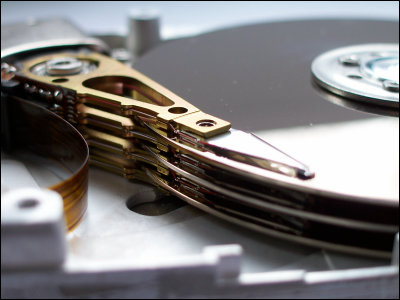At last a hard disk with a capacity of 5 TB appeared in 2014, to 20 TB in 2020

ByRoberto Fontana
Up to now, the capacity of hard disks has been increasing mainly by improving the magnetic density, but the improvement of the magnetic density has been approaching the limit. In order to overcome this problem Seagate technology adopted SMR technology, succeeded in increasing the capacity of the hard disk by 25%.
Seagate to produce 5 TB hard drive next year, 20 TB by 2020 - Computerworld
http://www.computerworld.com/s/article/9242268/Seagate_to_produce_5TB_hard_drive_next_year_20TB_by_2020
AnandTech | Seagate to Ship 5TB HDD in 2014 using Shingled Magnetic Recording
http://www.anandtech.com/show/7290/seagate-to-ship-5tb-hdd-in-2014-using-shingled-magnetic-recording
Just as the NAND flash hits the limits of miniaturization, hard disks are also approaching the limit of magnetic density. Conventionally, the capacity of the hard disk,PlattersIt has increased in a way that competes for how much data can be packed per piece. Data is saved in the area called track on the platter. For this reason, increasing the capacity of the hard disk by placing more tracks on a single platters has continued efforts to increase the magnetic density of the platter.
However,"Superparamagnetic limit"Although the critical recording density per square inch is said to be 1 Tb, the method of increasing the magnetic density is already approaching the limit (for example, Seagate's hard disk already has a recording density of 625 Gb per square inch It has reached.
Therefore, apart from the method of increasing the magnetic density, one of the technologies researched and developed to increase the recording capacity is "Shingled Magnetic Recording(SMR) ".
The data recording of the conventional hard disk was done in units of tracks, and the width of the writing track was wider than the width of the reading track. That is, there was a useless space at the end of the track.

In contrast, in SMR tracks are overlapped like roof tiles, making it possible to utilize wasted parts of the truck.

By adopting SMR, Seagate says that hard disk capacity will improve by 25%. Although the capacity of 1 TB is currently the highest density platter, it is said that it can be improved to 1.25 TB. This means that Seagate will release a 5 TB hard disk with four platters incorporated in 2014.
However, SMR has one design problem. That is the problem that data is overwritten when the data is held in the overlapped track part, which risks data corruption. Seagate solves this problem by bundling tracks into a group called bands.

Seagate grouped the tracks into bands at the end of the "tile roof" structure, and adopted a mechanism to avoid overwriting the data by stopping the tile roofing process that overlaps the tracks at that time. Seagate says that by grouping the bands, the number of tracks that need to be rewritten can be optimized and performance of data writing improves.

Seagate has already announced that 1 million units of hard disks that adopted SMR technology have already been shipped. Also, we predict that data such as photos, movies and music used in ordinary households will increase by 20 times as much as two years later, and plans to further increase hard disk capacity along with that, The capacity is expected to reach 20 TB by 2020.
There are various attempts to increase the capacity of the hard disk, Seagate rival company Western Digital,Fill the inside of the hard disk with helium with lower resistance than airIt is rumored to release a 5 TB hard disk in the later half of this year due to technology that makes platter more closer. The technology competition that improves hard disk capacity is going to be increasingly fierce.
Related Posts:
in Hardware, Posted by darkhorse_log







